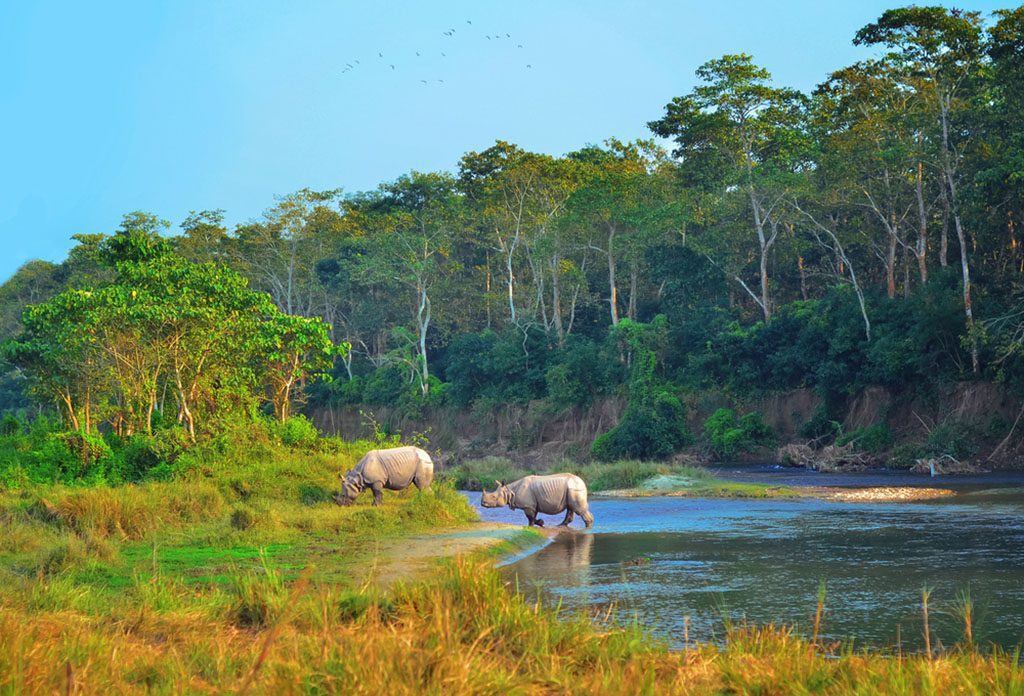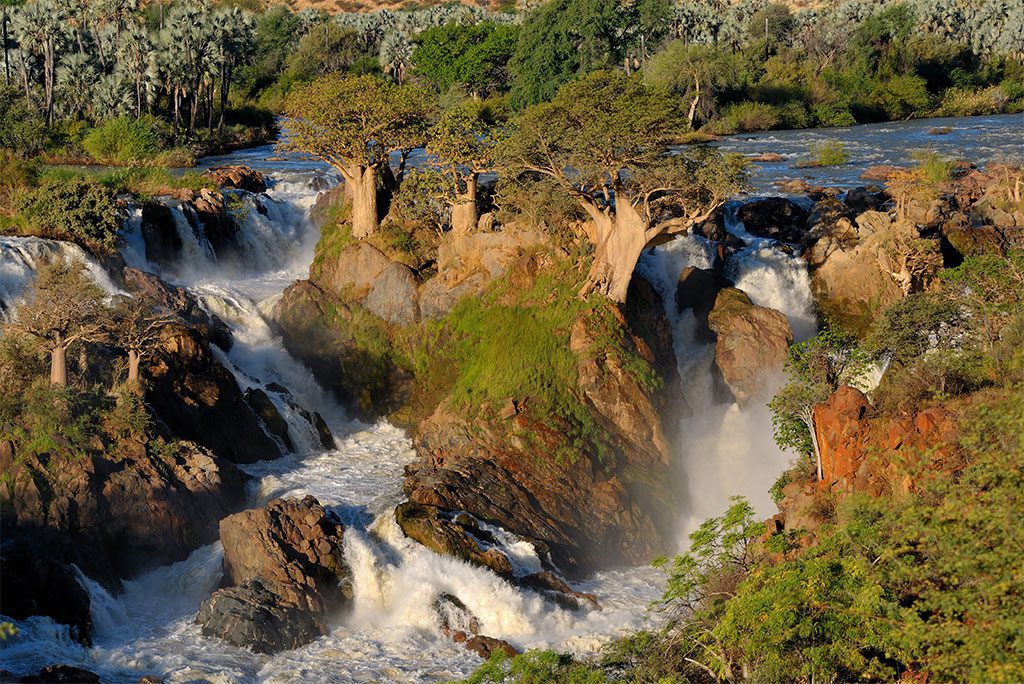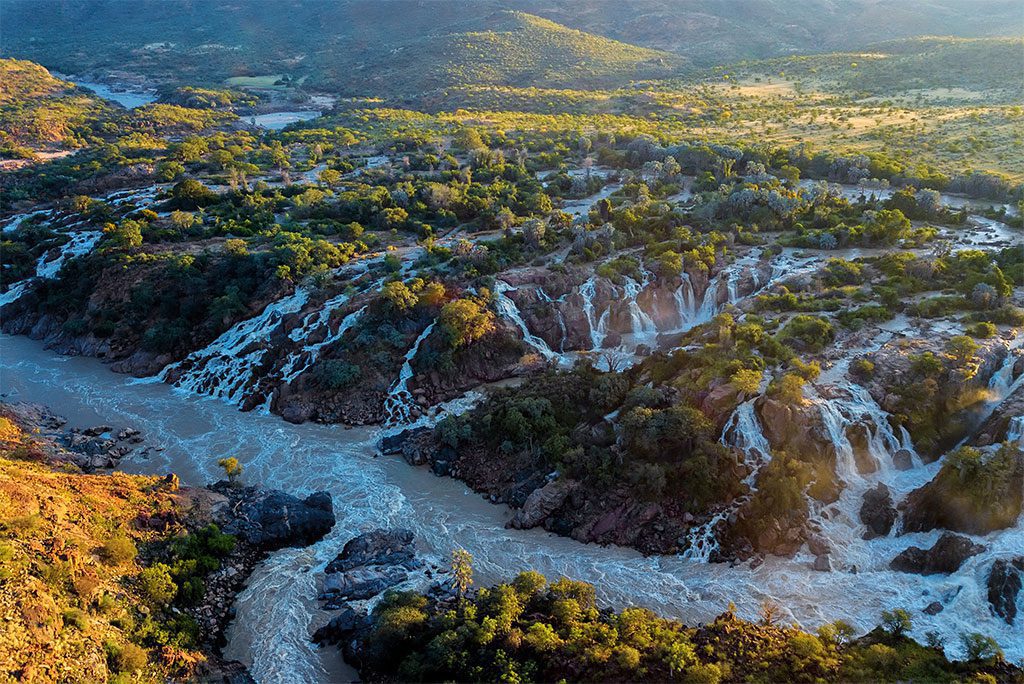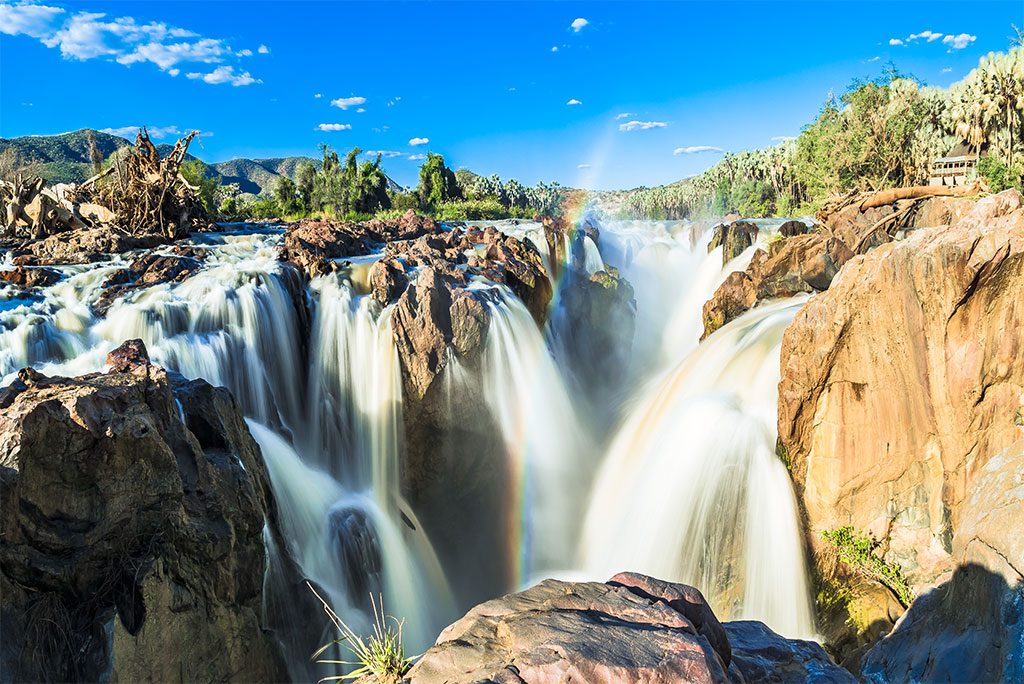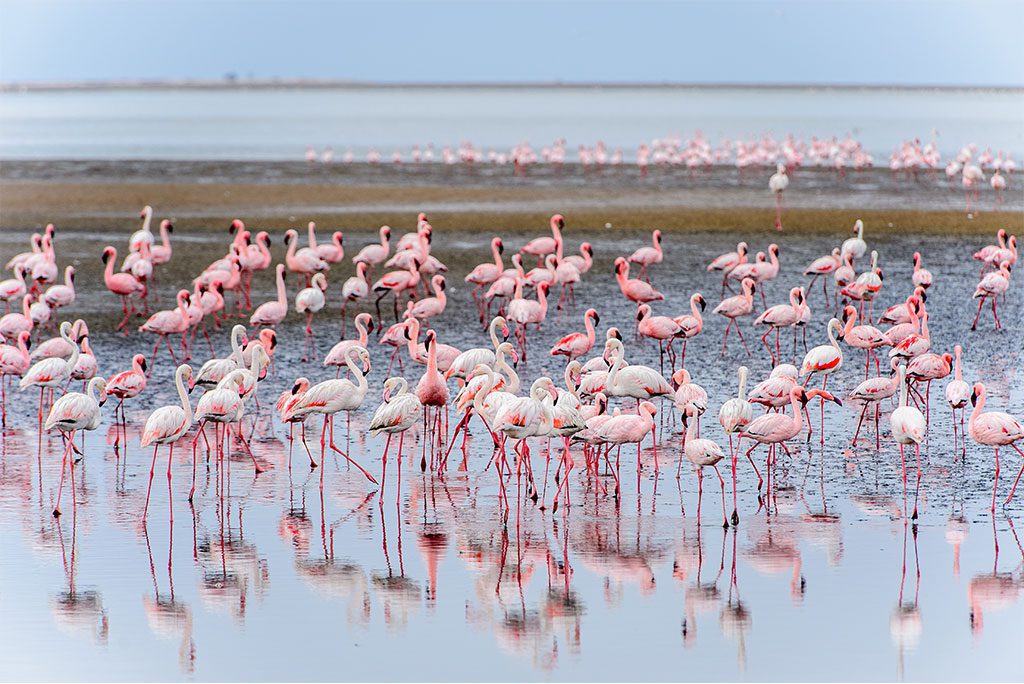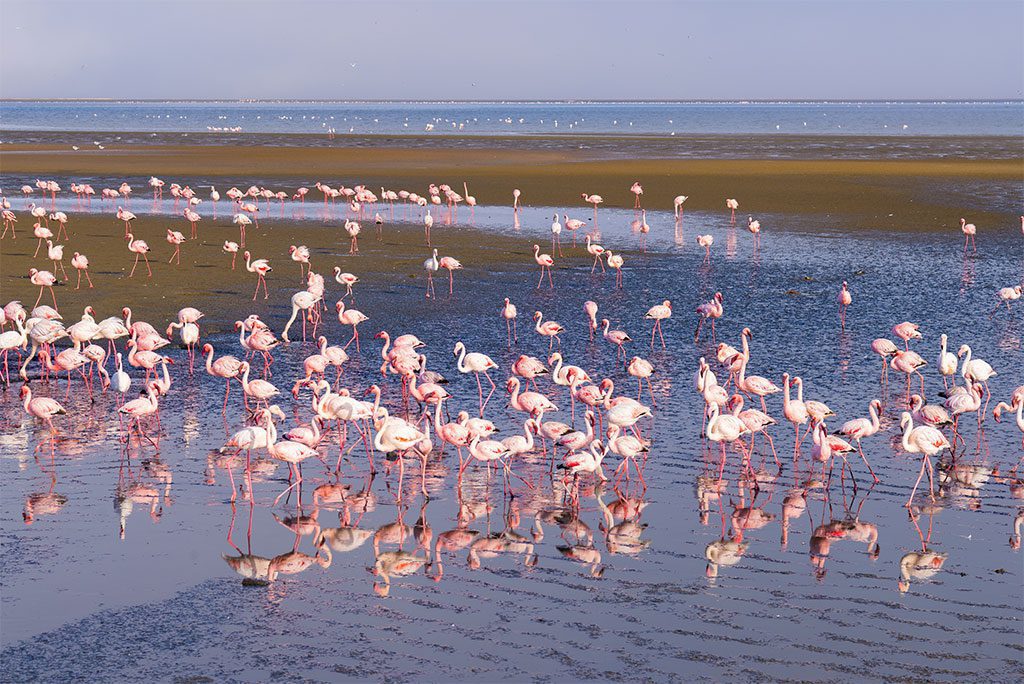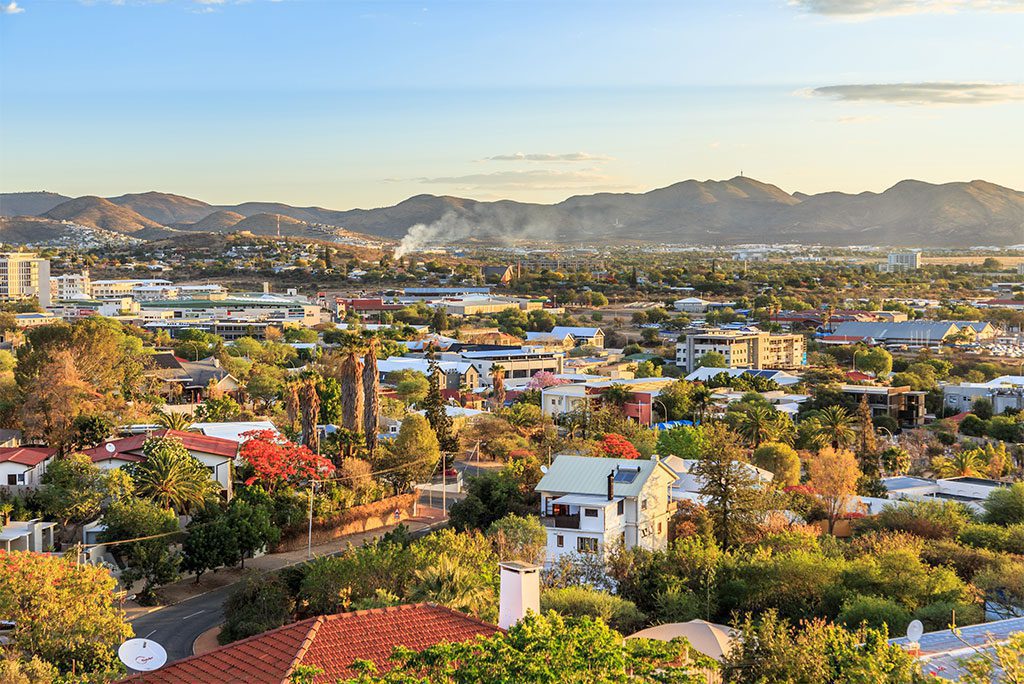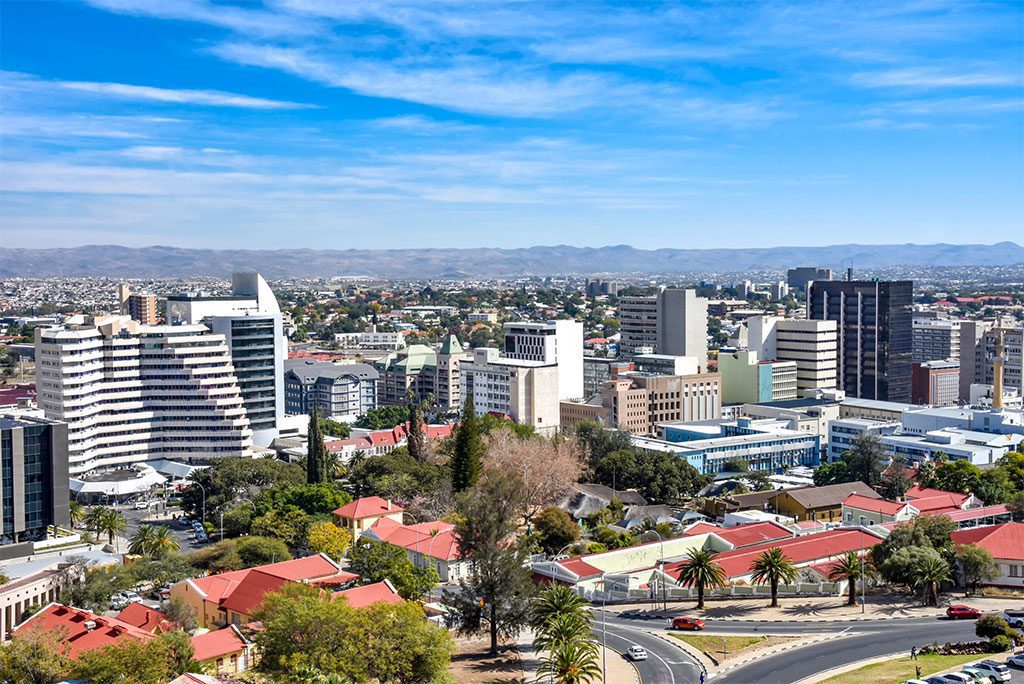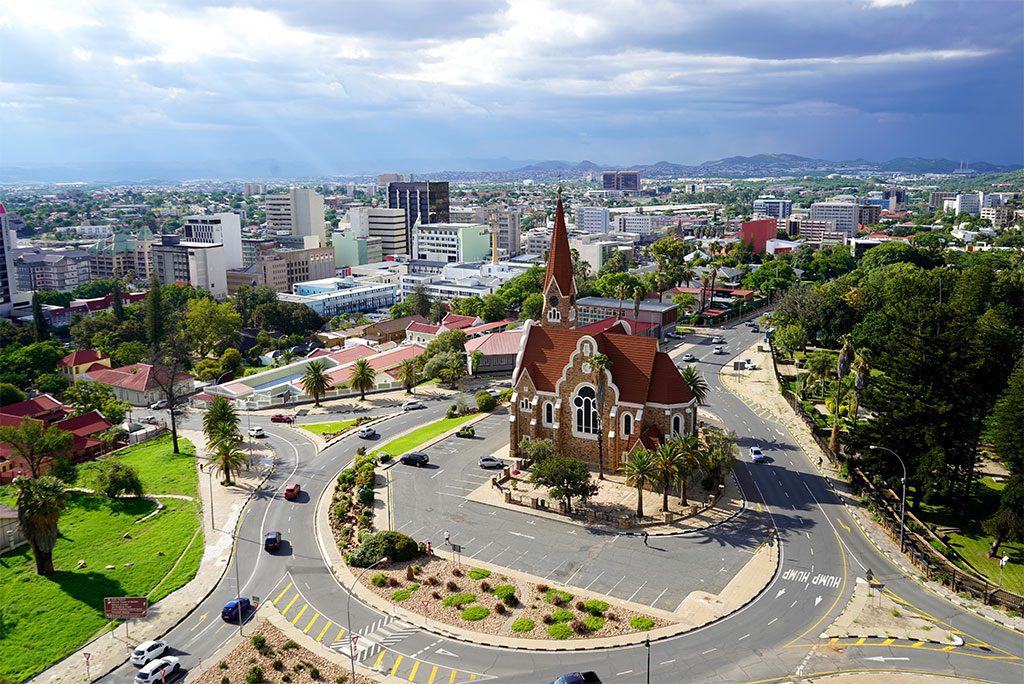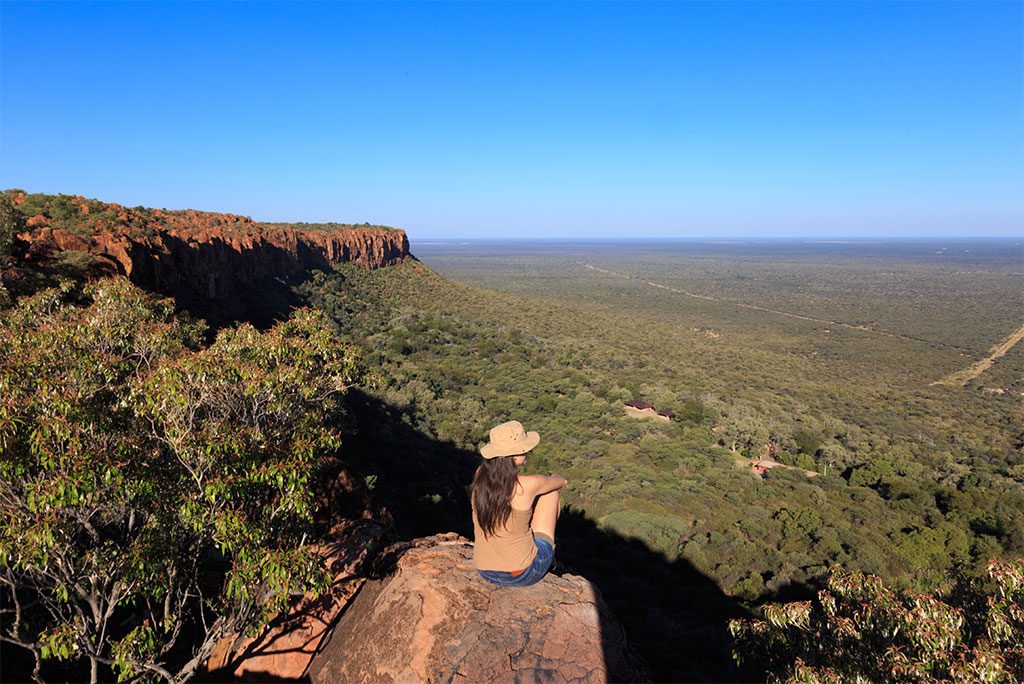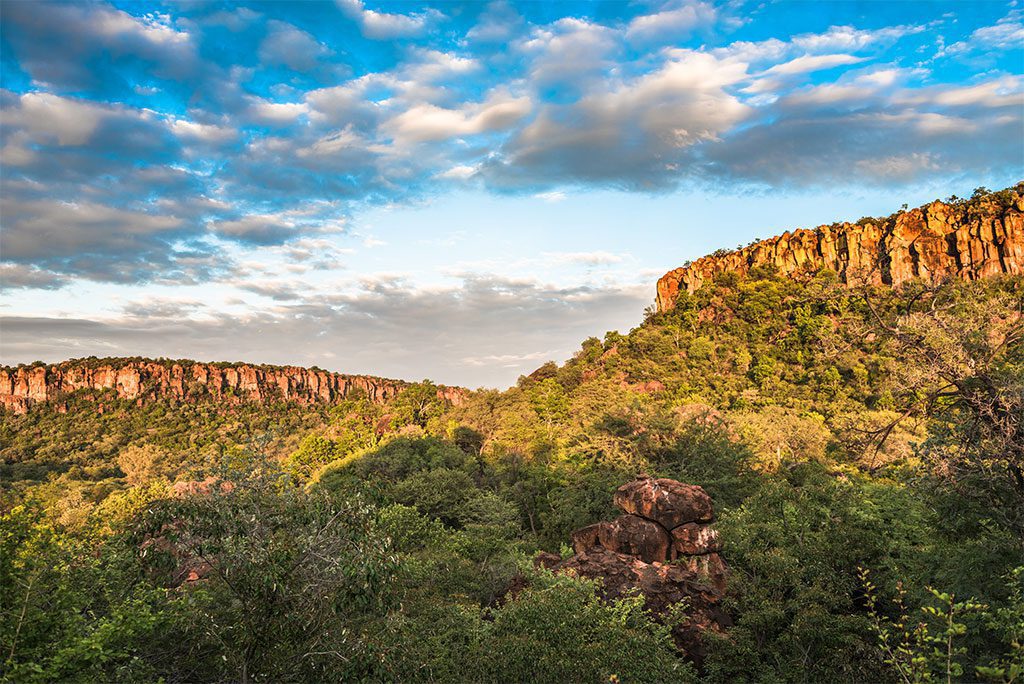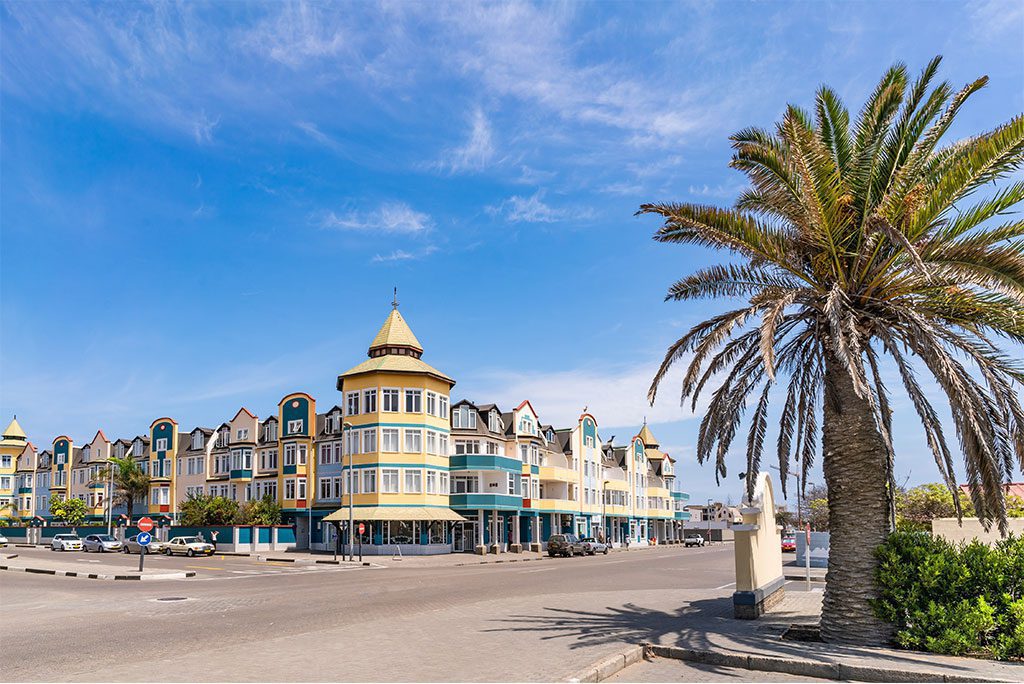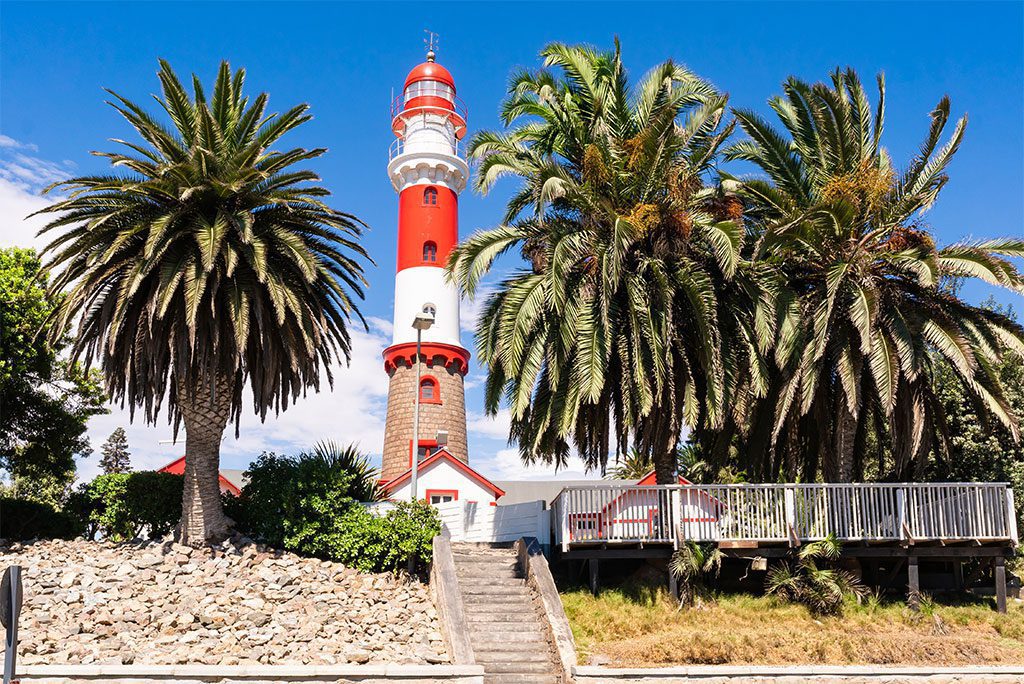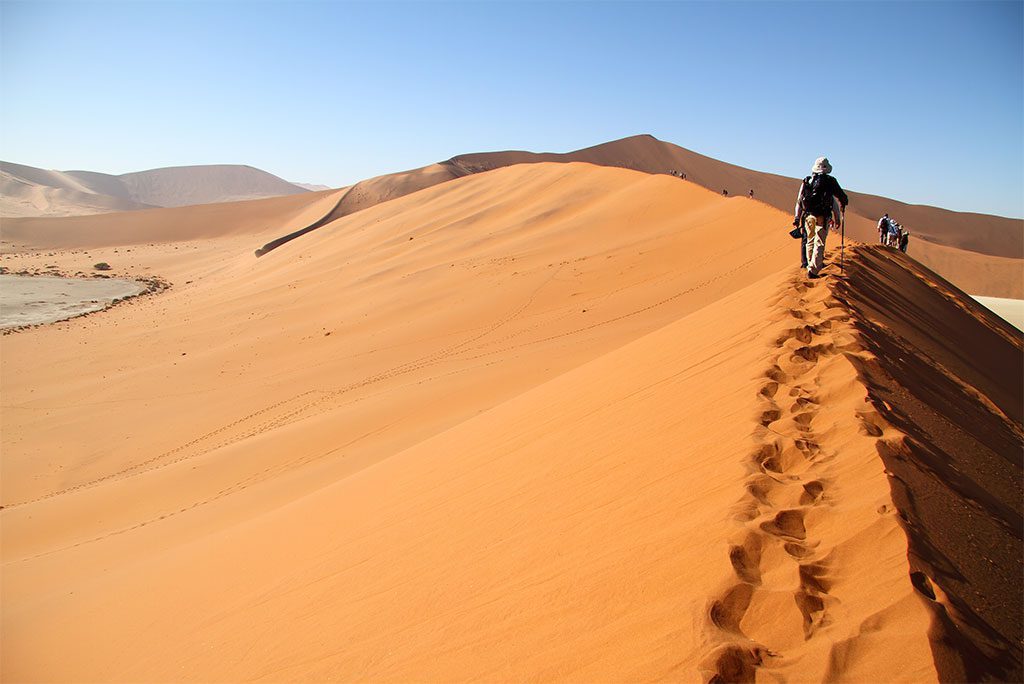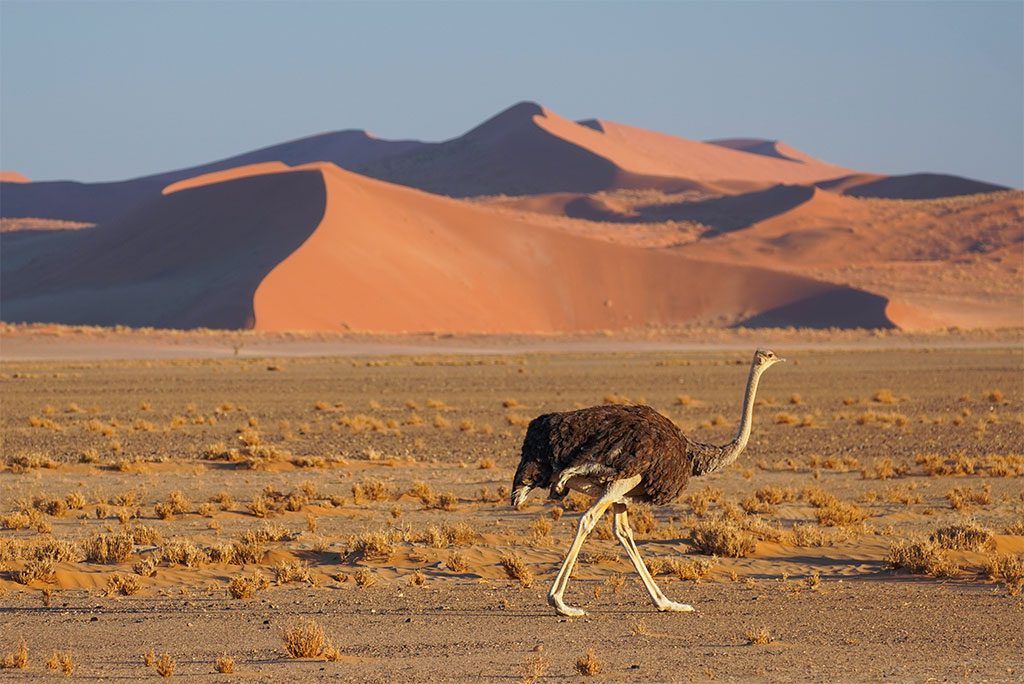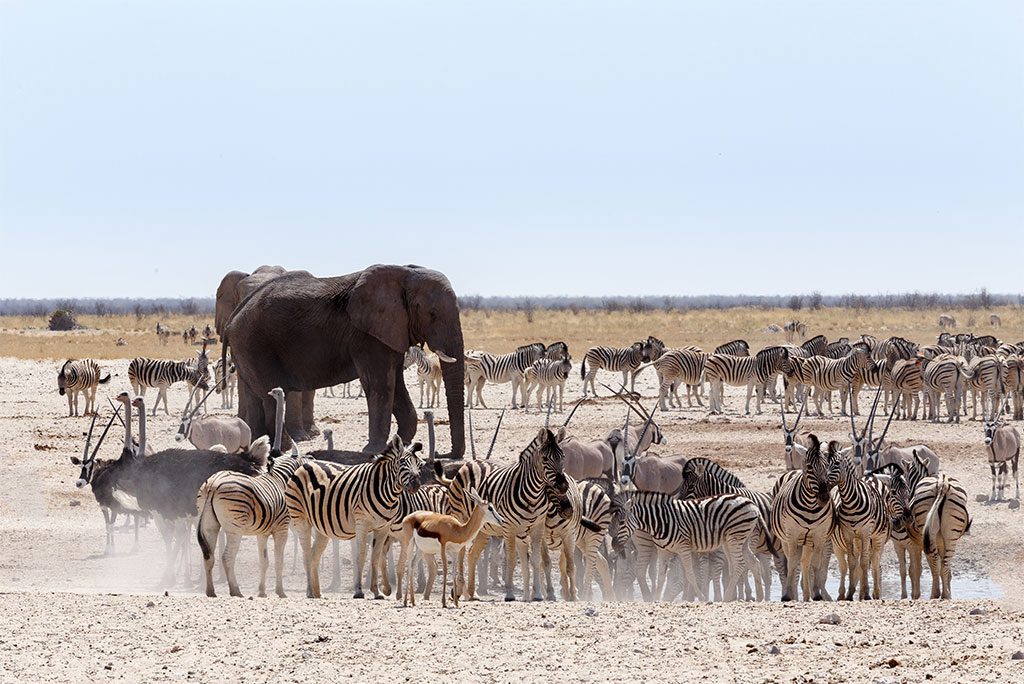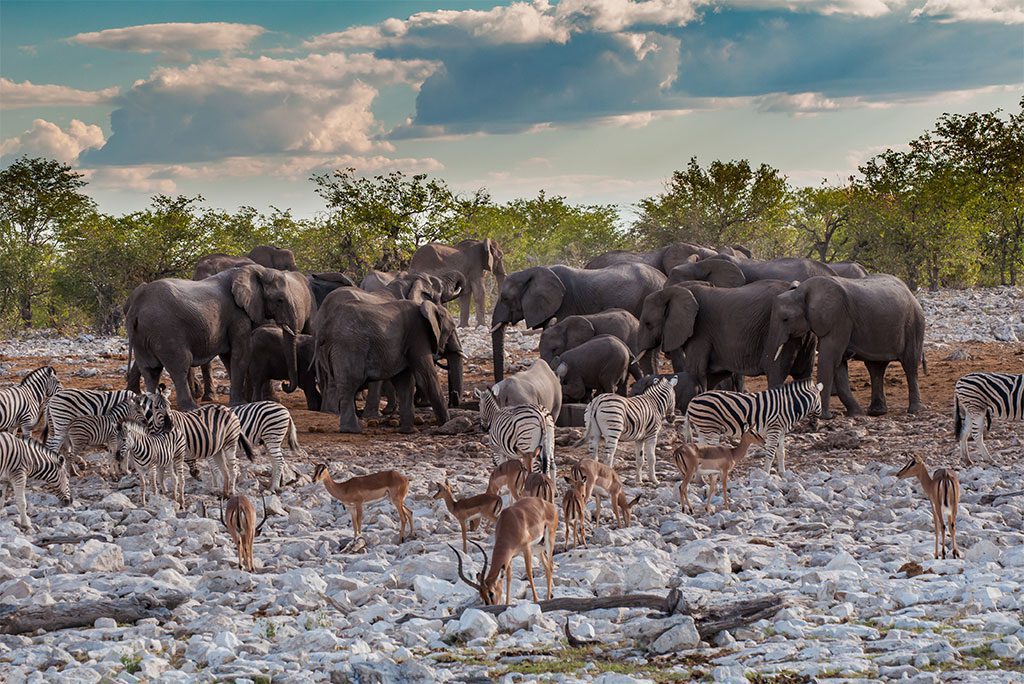Namibia is located in southwest Africa and was once a German colony until gaining its independence in 1990. Namibia is renowned for its diamond industry, San culture, and abundance of natural wonders. The magnificent Epupa Falls may be found in Fish River Canyon Park, which is itself a picturesque paradise.
Vacationing in Namibia is perfect if you want to take photos of beautiful landscapes and engage in thrilling outdoor activities. To help you decide where to go in Namibia, we’ve compiled a list of our top picks.
10. Epupa Falls
Epupa Falls is located in Kaokoland, an area between the Namibian and Angolan borders. The Kunene River is responsible for the formation of these waterfalls, which are located at intervals of one mile. Palm trees, fig trees, and a variety of other tropical plants dot the landscape around the waterfalls.
Epupa Falls is still a popular tourist destination in Namibia despite its remote location and the need for 4×4 cars to get there. The vast majority of tourists who come to see Epupa Falls spend the night at one of the lodges in the area. Whitewater rafting is an exhilarating activity that may be enjoyed anywhere along the river.
9. Walvis Bay
Walvis Bay, on the coast of Namibia, is a significant shipping hub. Desert sports enthusiasts, both tourists and locals, go there in large numbers. Due to the high winds on the lake, kitesurfing is possible at the lagoon.
Dune boarding, a spicier take on snowboarding that takes advantage of the sandy desert surroundings, awaits you inland. Once you reach the shore again, you may go fishing or take a boat out to see dolphins or seals. Opportunities for birdwatching abound, especially in the wetland areas frequented by flamingos.
8. Skeleton Coast National Park
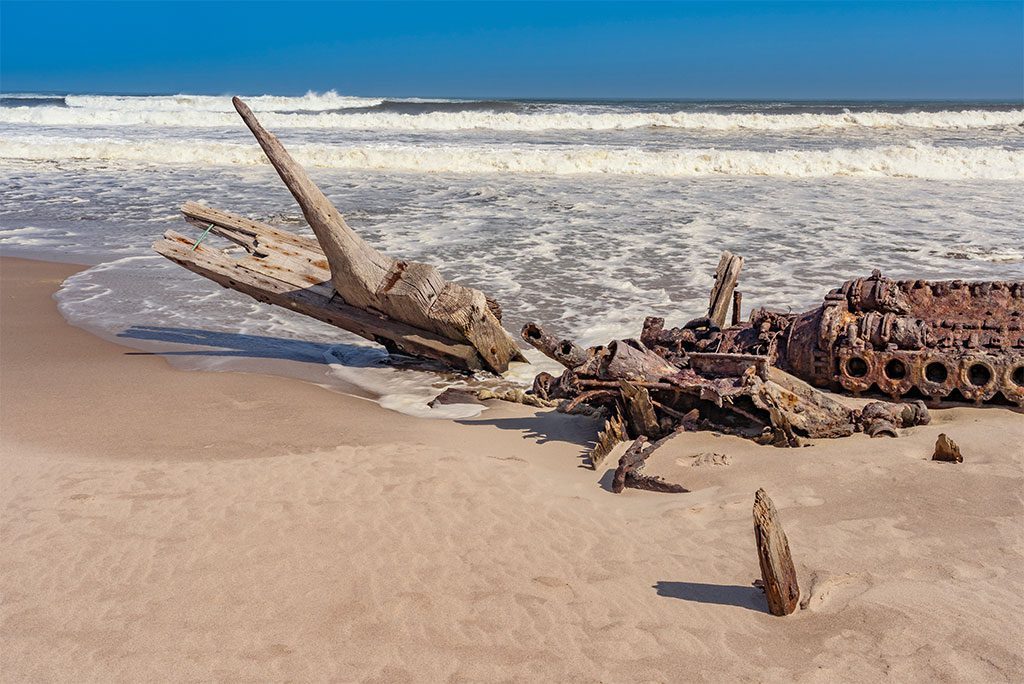
The moniker “Skeleton Shore” refers to how dangerous it was for ships to navigate the coast in the past. The lonely shoreline is still recognised as the largest ship graveyard in the world. Few people live in the area now protected as Skeleton Coast National Park.
The Cape Cross Seal Reserve is the main draw for most tourists. The reserve is notable since it was the first European port of call on the Namibian Coast in the 15th century. Additionally, more than 200,000 cape fur seals call this area home and attract many tourists because of the seals’ cuteness.
7. Windhoek
Windhoek, the nation’s capital and biggest city, is the top tourist attraction. Your long safari is likely to begin in Windhoek. The city, however, offers a great number of attractions and activities that make it worthwhile to stay.
You should visit the Parliament of Namibia and the Christuskirche, a historic Lutheran church, if you’re interested in learning about Namibia’s past. Windhoek is a fantastic city in which to do some souvenir shopping. The Maerua Mall has both smaller, local retailers and larger, chain stores.
6. Waterberg Plateau Park
The Waterberg Plateau Park is a huge red sandstone plateau in northern Namibia that protects endangered species. The best way to see the buffalo, rhinoceroses, and antelope that attract most tourists is on a guided trip.
There are around 200 different bird species in the area, and Cape vultures use it as a nesting place. A select group of intrepid visitors may embark on multi-day treks across Waterberg Plateau Park once a week.
Only hikers with the proper permits and guides are permitted between April and November. Outside the park’s borders, visitors may find hotels and campgrounds with a variety of services and accommodations.
5. Luderitz
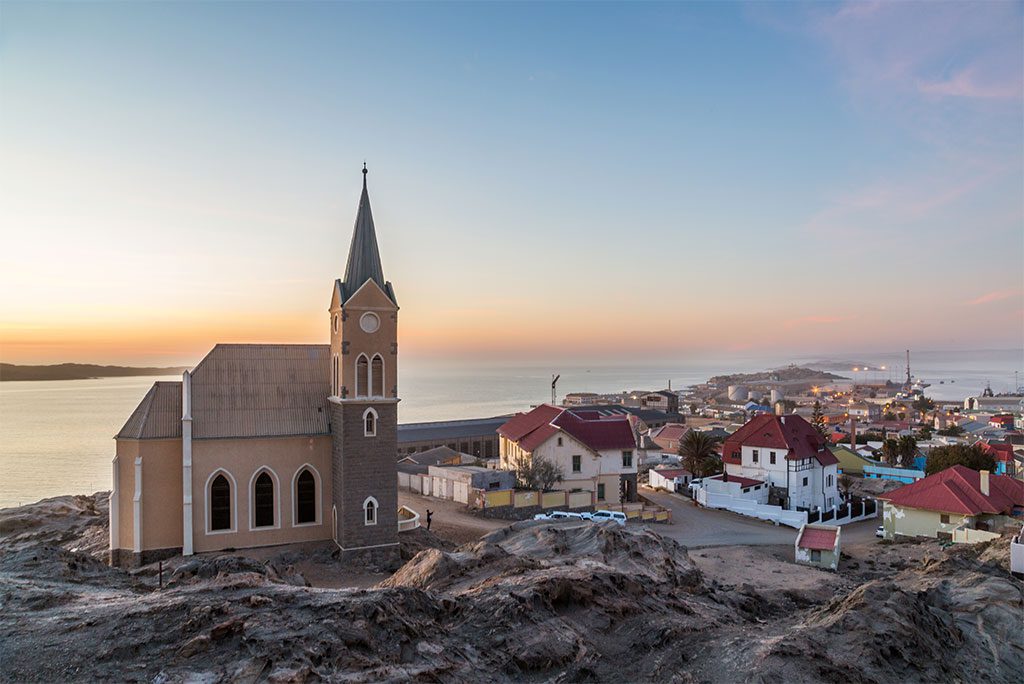
Namibia, a former German colony, has significant Germanic cultural, linguistic, and culinary influences. The seaside city of Luderitz is one of the most glaring examples of this effect. The abundance of German-sounding street names and the prevalence of Art Nouveau architecture can make you forget you’re in Namibia and instead think you’re in Bavaria.
While in Luderitz, be sure to check out the historic Troost House, the Deutsche Afrika bank building, and the town’s Lutheran churches. Don’t miss out on visiting the adjacent diamond-mining ghost town of Kolmanskop. The town is now both spooky and lovely due to the encroaching sand dunes.
4. Swakopmund
The beachfront city of Swakopmund is a popular holiday spot for Namibians. Swakopmund, a former German colonial outpost, is home to several beautiful and historic buildings.
Why this place is considered Namibia’s “adventure capital” is obvious. Travelers visiting Swakopmund may enjoy a variety of desert and coastal activities, including sandboarding, camel rides, and quad riding. There are a large number of excellent establishments selling food from all over the world, as well as some excellent taverns serving beer made in the area.
3. Fish River Canyon Park
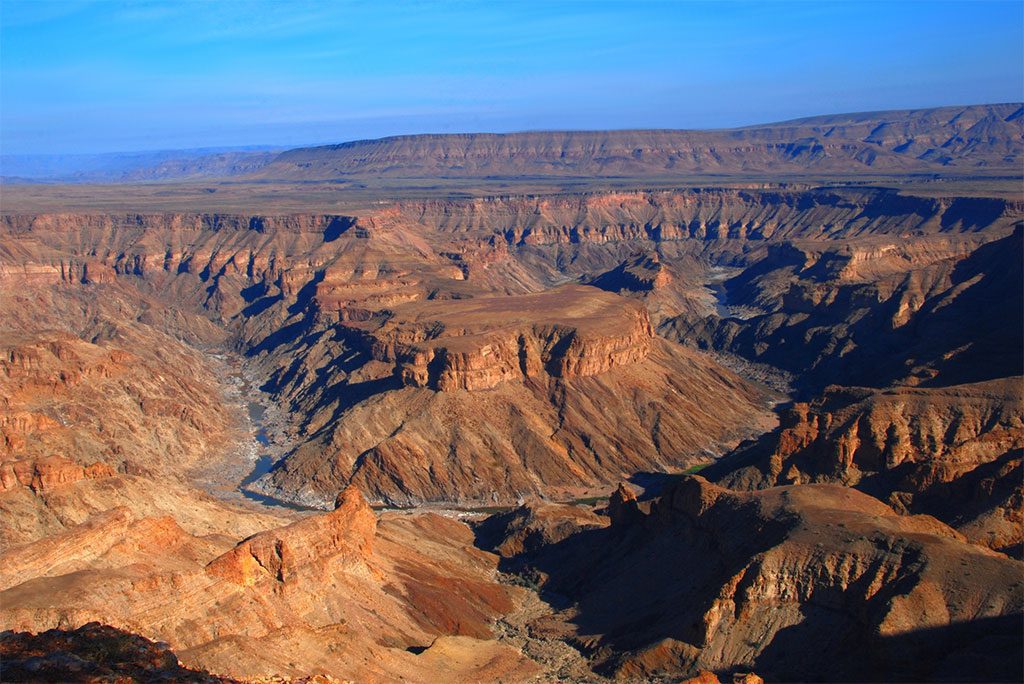
See one of the world’s biggest canyons right here at Fish River Canyon Park. The Fish River, one of the longest in Africa, cuts through this canyon, which is called the Visrivier Afgronde in the local language of Afrikaans. Fish River Canyon Park may be seen and experienced in person in a variety of breathtaking ways.
The Fish River Canyon Trail is a popular choice among hikers. Remember that the whole distance of the path is around 80 kilometres (50 miles). In addition to swimming in the Fish River, you may also take a spectacular hike above the top of the canyon.
2. Namib-Naukluft National Park
Namib-Naukluft National Park is home to both the Namib Desert and the Naukluft Mountains, as suggested by the park’s dual names. It’s a stunning location and the biggest wildlife park in all of Africa. The park is dominated by red sand dunes, a dynamic scenery that must be seen to be believed. In person, you’ll be able to see lunar-like scenery and some of the world’s most impressive high dunes.
Sossusvlei is where most visitors to the park go, and with good reason; the region is home to some of the tallest dunes in Namibia, at over 300 metres (1000 feet) in height. When the Kuiseb River is not merely a sandy riverbed, you should also visit the Kuiseb Canyon.
1. Etosha National Park
Etosha National Park, which encompasses the enormous Etosha salt pan, is the second biggest of Namibia’s wildlife reserves, after Namib-Naukluft. During the summer, the pan temporarily fills with water, but this is enough to foster the development of blue-green algae, which in turn attracts hundreds of flamingos.
Zebras, wildebeests, and antelopes congregate at the pan’s watering holes. Five well-established rest camps provide visitors with all the amenities they need for a memorable self-drive safari in Etosha.


